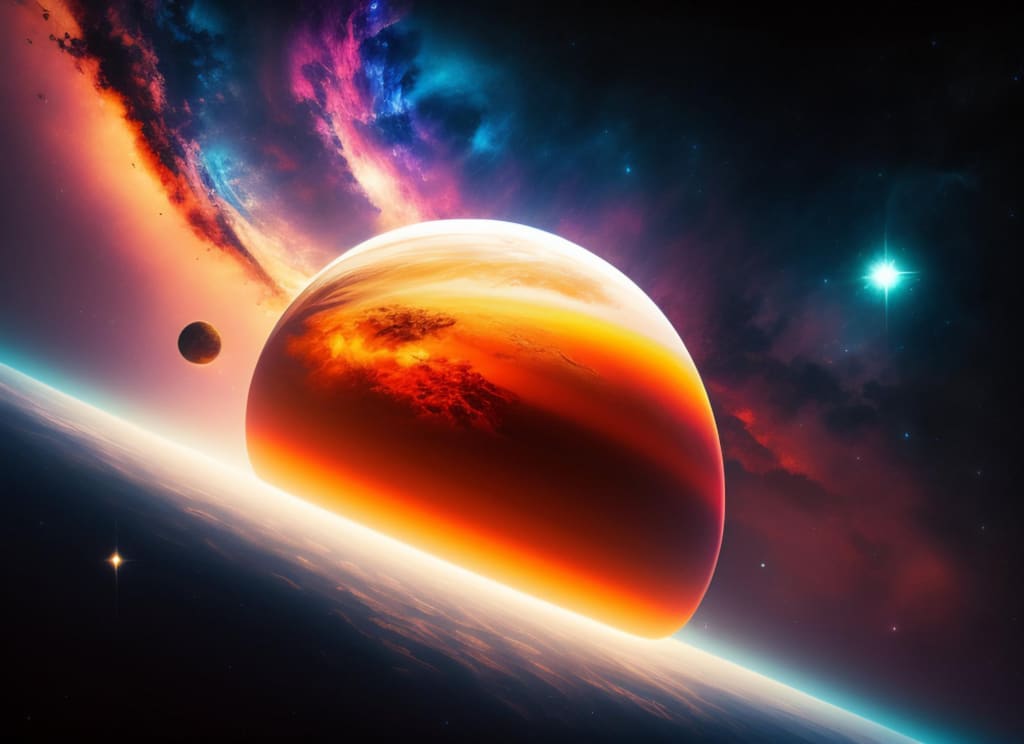Voyage to Saturn: Unveiling the Enigmas of a Distant Giant
Imagining the Human Experience of Exploring Saturn's Breathtaking Realms

In the year 2017, NASA's Cassini probe granted us an unparalleled view of Saturn as it courageously delved into the tumultuous heart of the planet's stormy atmosphere. The images it captured were nothing short of breathtaking. Yet, let us embark on a mental journey to contemplate: What if it were humans making this odyssey in person?
Saturn, our ringed celestial neighbor, resides at a staggering distance of 1.2 billion kilometers away from Earth. In the realm of current spacecraft technology, such a voyage would demand an arduous eight-year commitment. After all the anticipation and anticipation, you finally arrive, your eyes feasting upon the majestic Saturn. A colossal world, Saturn ranks as the second largest planet in our solar system, a cosmic giant that could comfortably envelop over 760 Earths within its vast expanse.
However, let's pause for a moment. Our journey to Saturn would be incomplete without a close encounter with its most iconic feature—the resplendent rings. These grand arcs encircling Saturn are so extensive that they rival the distance between Earth and its moon. At a glance, one might deem them an inviting place to set foot, a place to explore at leisure. Yet, a considerable hurdle presents itself: the rings are far from being solid pathways. Rather, they constitute an intricate assemblage of ice fragments, ranging from minuscule dust particles to colossal bus-sized chunks.
Now, suppose we dared to tread on Saturn's outermost ring, ready to venture upon a 12 million kilometer journey—the equivalent of circumnavigating Earth 15 times over. Our path would be punctuated by encounters with diminutive moons and ephemeral spokes of dust floating above the surface. Amid this celestial ballet, we would also observe minute ice particles escaping the rings, hurtling towards Saturn itself. This captivating phenomenon is none other than "ring rain," a consequence of Saturn's magnetic fields siphoning material from the rings. It's a race against time; every half hour, enough water is lost from the rings to fill an Olympic-sized swimming pool. If we were to journey to Saturn's rings 300 million years hence, we would be met with barren space instead of these captivating features.
Now, let's reboard our hypothetical vessel and direct our attention to Saturn itself, a mere 282,000 kilometers away. Upon nearing Saturn's northern pole, a rather perplexing predicament comes into focus: there's no solid ground to land upon. Saturn's composition primarily consists of hydrogen and helium gases, categorizing it as a gas giant. At an altitude of 4,000 kilometers above its surface, we encounter Saturn's upper atmosphere. As we descend through the planet's polar region, a wondrous aurora dances before our eyes—an ethereal light display akin to the auroras witnessed on Earth, yet unique in its grandeur. Saturn's magnetic field generates substantial electrical currents that in turn heat up the atmosphere at its poles, resulting in these magnificent displays. However, beware of the aurora's potential to interfere with our craft's electronic systems and navigational instruments.
Continuing our descent, we plunge into Saturn's troposphere, the atmospheric region where weather patterns originate. Prepare for powerful gusts of wind, capable of reaching speeds close to 400 meters per second—three times the velocity of Earth's mightiest hurricanes. As we look around, dense yellow clouds dominate the scenery. Composed of ammonia crystals, these clouds contribute to Saturn's distinctive hue. If curiosity compels you to take a whiff, you might detect the distinct scent of ammonia—though it's advisable to avoid prolonged exposure, given its corrosive and hazardous nature.
In the chilling environment outside, temperatures plummet to a bone-chilling -250 degrees Celsius, far colder than even the most frigid regions on Earth. However, let us venture deeper to where conditions are more hospitable. At approximately 300 kilometers beneath the surface, we reach a layer of water, where temperatures remain at a comparatively mild 0 degrees Celsius. As we delve even further, the surrounding pressure surges, transforming liquid water molecules into solid ice particles. Brace yourself for a barrage of hail, though we hope our craft is sturdy enough to withstand this icy onslaught.
Should we emerge from this icy barrage unscathed, we'll encounter yet another challenge: a layer of liquid metallic hydrogen. This metallic substance conducts electricity, potentially compromising our craft's electronics and navigation systems. Nevertheless, if we manage to endure these challenges, we'll have the privilege of glimpsing one of Saturn's greatest mysteries—the possibility of an iron and nickel core at its heart. Here, the extreme conditions exceed 83,000 degrees Celsius, surpassing the temperatures of the sun's surface. Alas, surviving these conditions is nigh impossible, as even the most robust spacecraft would be reduced to ashes.
In the end, perhaps it's best to leave the exploration of Saturn's wonders to the realm of unmanned probes and imagination. The challenges and mysteries that Saturn presents remain an irresistible draw for science fiction enthusiasts and curious minds alike.
About the Creator
Enjoyed the story? Support the Creator.
Subscribe for free to receive all their stories in your feed. You could also pledge your support or give them a one-off tip, letting them know you appreciate their work.





Comments
There are no comments for this story
Be the first to respond and start the conversation.